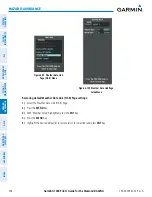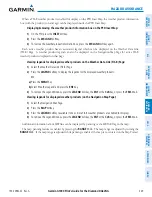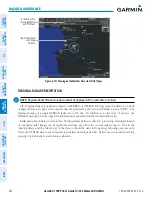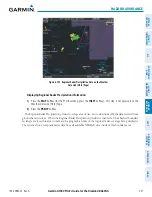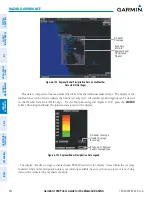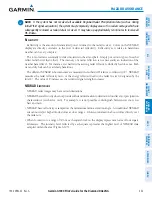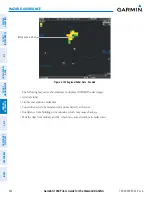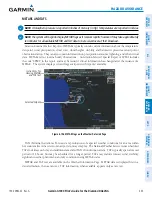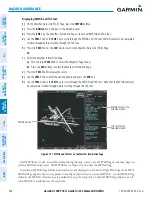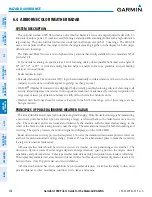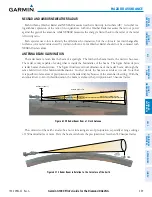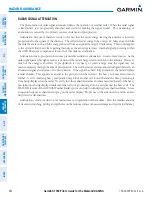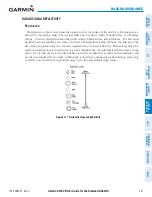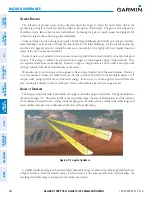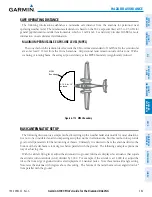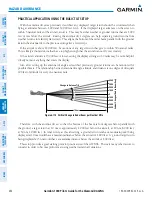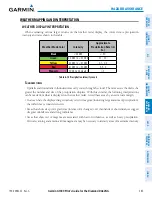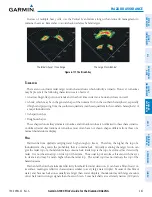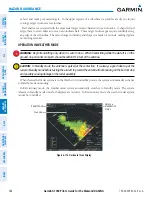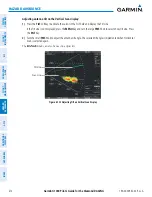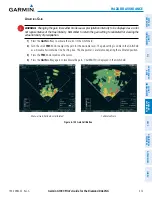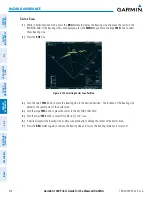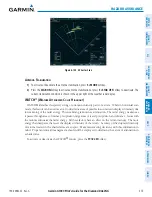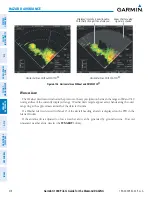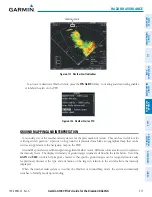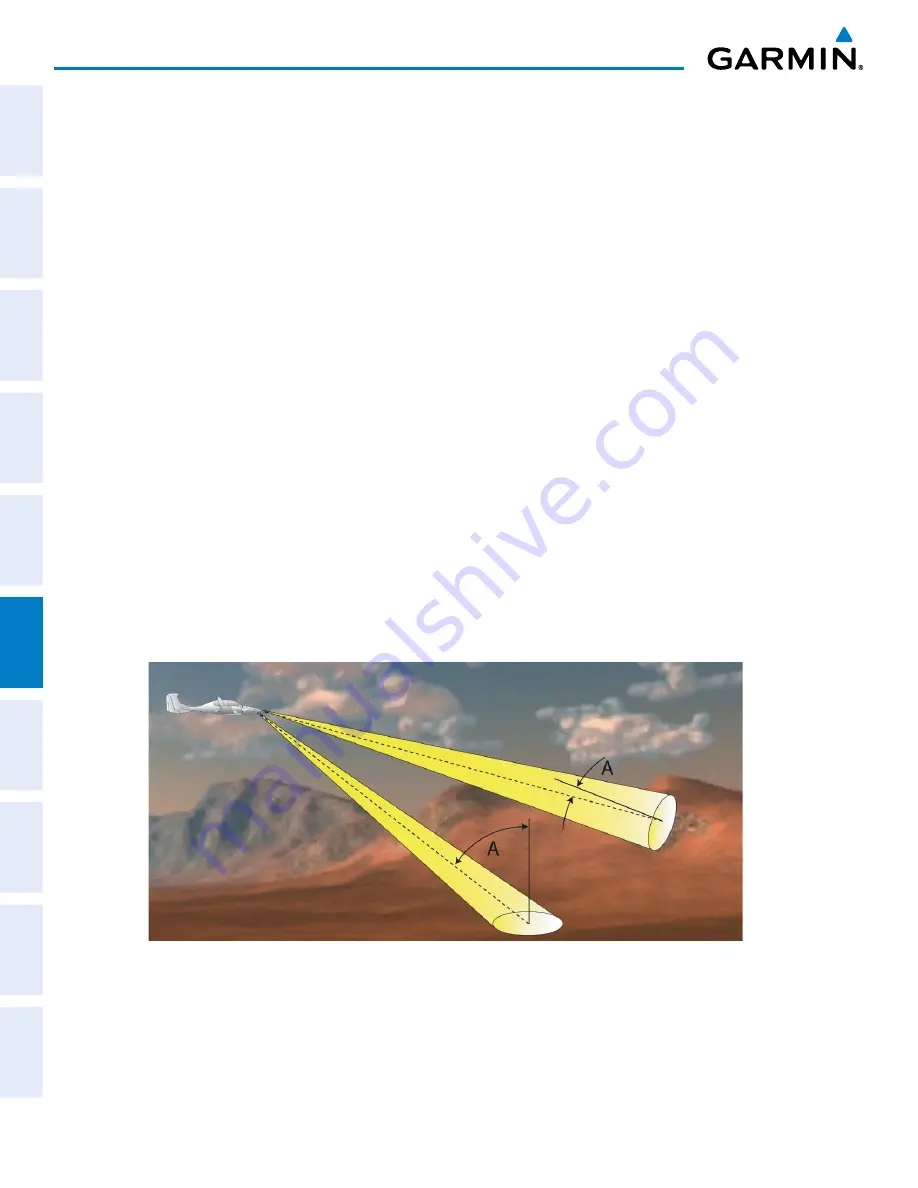
Garmin G1000 Pilot’s Guide for the Diamond DA42NG
190-00-00962-02 Rev. A
362
HAZARD AVOIDANCE
SY
STEM
O
VER
VIEW
FLIGHT
INSTRUMENTS
EIS
AUDIO P
ANEL
& CNS
FLIGHT
MANA
GEMENT
HAZARD
AV
OID
ANCE
AFCS
ADDITIONAL FEA
TURES
APPENDICES
INDEX
g
RounD
R
etuRns
The intensity of ground target returns depends upon the angle at which the radar beam strikes the
ground target (Angle of Incidence) and the reflective properties of that target. The gain can be adjusted so
shorelines, rivers, lakes, and cities are well-defined. Increasing the gain too much causes the display to fill
in between targets, thus obscuring some landmarks.
Cities normally provide a strong return signal. While large buildings and structures provide good returns,
small buildings can be shadowed from the radar beam by the taller buildings. As the aircraft approaches
and shorter ranges are selected, details become more noticeable as the highly reflective regular lines and
edges of the city become more defined.
Bodies of water such as lakes, rivers, and oceans are not good reflectors and normally do not provide good
returns. The energy is reflected in a forward scatter angle with inadequate energy being returned. They
can appear as dark areas on the display. However, rough or choppy water is a better reflector and provides
stronger returns from the downwind sides of the waves.
Mountains also provide strong return signals to the antenna, but also block the areas behind. However,
over mountainous terrain, the radar beam can be reflected back and forth in the mountain passes or off
canyon walls, using up all or most of the radar energy. In this case, no return signal is received from this
area, causing the display to show a dark spot which could indicate a pass where no pass exists.
a
ngle
of
i
nciDence
The angle at which the radar beam strikes the target is called the Angle of Incidence. The figure illustrates
the incident angle (‘A’). This directly affects the detectable range, the area of illumination, and the intensity
of the displayed target returns. A large incident angle gives the radar system a smaller detectable range and
lower display intensity due to minimized reflection of the radar energy.
Figure 6-112 Angle of Incidence
A smaller incident angle gives the radar a larger detectable range of operation and the target display shows
a higher intensity. Since more radar energy is reflected back to the antenna with a low incident angle, the
resulting detectable range is increased for mountainous terrain.

